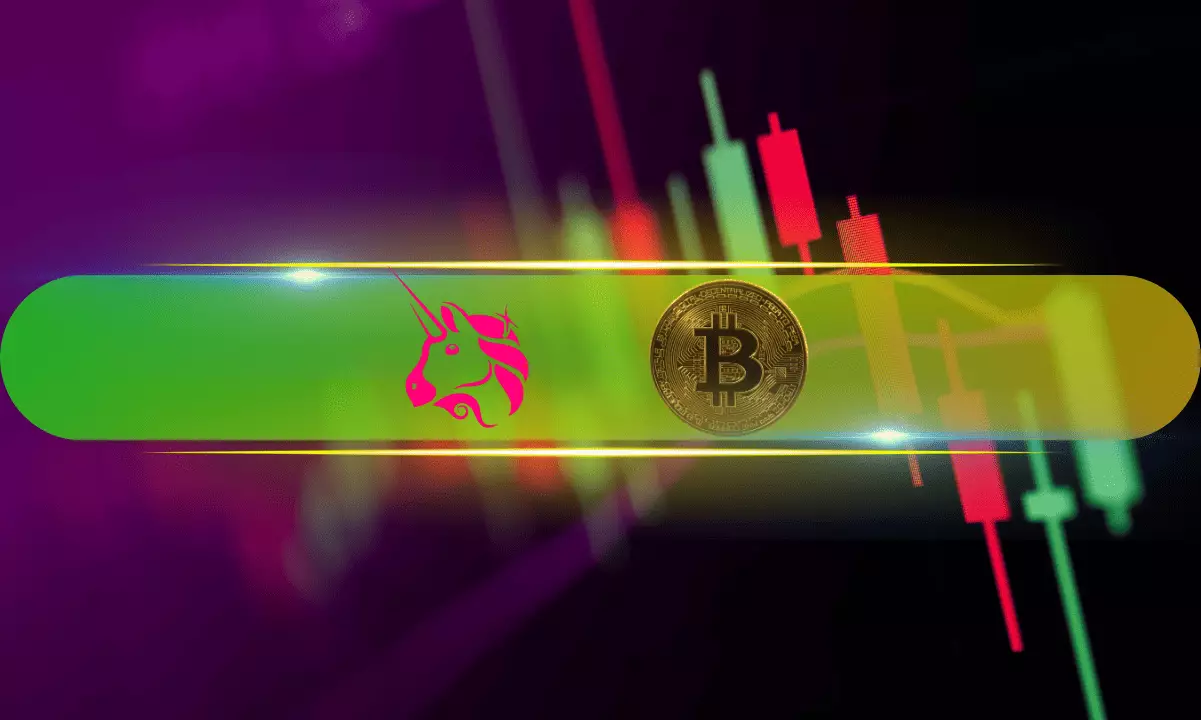In the ever-volatile cryptocurrency market, few events have managed to capture the attention of both seasoned investors and casual observers as dramatically as Bitcoin’s fluctuating price points. Recently, Bitcoin experienced a sudden spike, crossing the psychological threshold of $110,000 before plunging down to a familiar and disheartening level around $105,500. But this isn’t merely a tale of numbers; it sheds light on a larger theme within digital currency investments. The rise and fall signify more than market mechanics—they unravel the often-fickle psychology of investors grappling with fear and greed in a central economic wilderness.
The crypto market’s atmosphere is like a game of musical chairs. As Bitcoin clawed its way back up to $106,000 after a rapid drop to $103,100—a 12-day low—the question loomed large: Are we witnessing a genuine recovery or merely another chapter of instability? The fragile bulwark that Bitcoin maintains against significant downturns raises eyebrows, particularly at a time when market dominance reportedly slipped below 61%. Investors are left pondering whether the bullish signals are genuine or merely a mirage.
Altcoins and the Ripple Effect
While Bitcoin’s fate often commands the headlines, the emerging altcoins such as Uniswap (UNI) and Internet Computer (ICP) are staking their claims, showcasing their resilience. XRP, having managed a modest rally of nearly 3%, offers a glimmer of hope in the shadow of Bitcoin’s unpredictable spikes. These movements suggest that amid Bitcoin’s capriciousness, a growing number of altcoins are beginning to assert their place in the market.
Investors may find solace in the performance of Ethereum, firmly reclaiming its status above the $2,600 mark. This reinforces a notion that not all currencies are subject to the same volatility, allowing for a diversified investment strategy amidst Bitcoin’s peaks and valleys. In this context, Bitcoin’s current struggles might not be entirely negative.
The Macro Perspective: Dominance vs. Decentralization
The current narrative raises poignant questions about the dominance Bitcoin has wielded since its inception. As we see altcoins gaining traction and market capitalization adding a robust $15 billion within a single day, the once-untouchable position of Bitcoin may not be as solid as it once seemed. Can we expect a shift from Bitcoin’s monopoly to a more balanced and decentralized market, or is this just a temporary anomaly?
This moment in time could signify a healthy evolution within the cryptocurrency landscape, one where market behavior reflects innovation not just in Bitcoin but in the growing ecosystem around it. Investors on the center-right spectrum may argue that a diverse array of strong altcoins encourages competition, ultimately lending credibility to the market at large. In contrast, over-reliance on Bitcoin—a singular entity—could lead to disastrous outcomes during turbulent periods.
As the cryptocurrency universe surpasses a staggering $3.445 trillion in total market cap, we must question whether the current momentum toward Bitcoin and altcoins can be sustained. Observing this dynamic reveals not only the unpredictable nature of investments but also unravels the complexities of human behavior in the face of currency evolution. These transitions may reveal a path forward that balances potential risks with even greater opportunities.


Leave a Reply